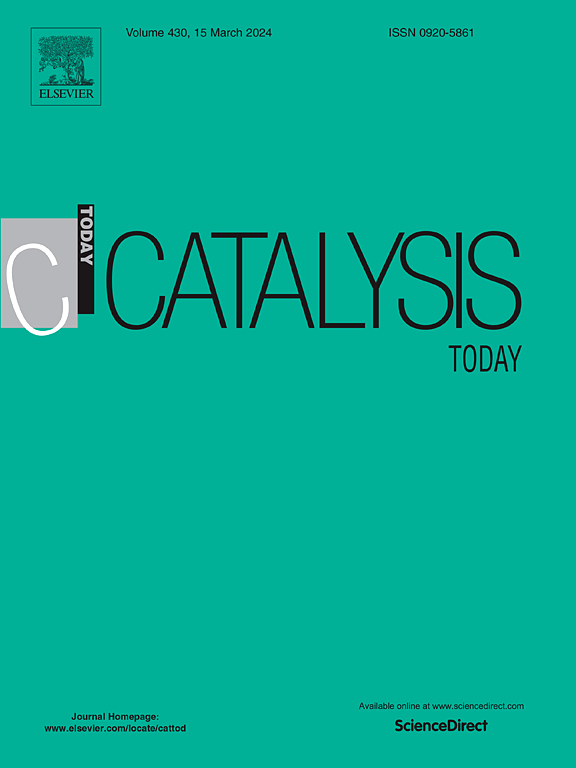液-液相转移催化下硫化铵选择性还原间碘硝基苯的多变量分析
IF 5.2
2区 化学
Q1 CHEMISTRY, APPLIED
引用次数: 0
摘要
采用水硫化铵在液-液相转移催化体系下对间碘硝基苯(m-INB)进行了还原。该工艺唯一产物为间碘苯胺(m-IA)。采用基于响应面法的实验设计优化了m-INB的转化。采用Box-Behnken设计来评估实验变量(温度、催化剂浓度、m-INB浓度和NH3/硫化物摩尔比)对m-INB还原的单独和交互影响。建立了可靠的二次回归模型,利用实验设计数据显示了较强的预测能力。通过期望函数优化预测,在温度321.5 K,催化剂浓度0.074 kmol/m³ ,m- inb /硫化物比0.233,NH3/硫化物摩尔比3.78的操作条件下,m- inb的最大转化率为100 %。方差分析显示,m-INB转换的R2值为99.4 %,证实了实验结果与拟合模型的预测值之间的强烈一致性。因此,本研究有效地证明了实验设计在模拟m-IA生产反应参数方面的优势。本文章由计算机程序翻译,如有差异,请以英文原文为准。
Multivariate analysis in selective reduction of m-iodonitrobenzene by aqueous ammonium sulfide under liquid-liquid phase transfer catalysis
Reduction of m-iodonitrobenzene (m-INB) was conducted under a liquid-liquid phase transfer catalysis system using aqueous ammonium sulfide. This process yielded m-iodoaniline (m-IA) as the sole product. An experimental design based on response surface methodology was utilized to optimize the conversion of m-INB. Box-Behnken design was employed to assess both individual and interactive effects of experimental variables (temperature, catalyst concentration, m-INB concentration, and NH3/sulfide mole ratio) on the reduction of m-INB. A reliable quadratic regression model was developed, demonstrating strong predictive capability using the experimental design data. Optimization via a desirability function predicted a maximum m-INB conversion of 100 % under the following operating conditions: temperature 321.5 K, catalyst concentration 0.074 kmol/m³ , m-INB/sulfide ratio 0.233, and NH3/sulfide mole ratio 3.78. The analysis of variance, which yielded an R2 value of 99.4 % for m-INB conversion, confirmed strong agreement between experimental outcomes and predicted values obtained from the fitted model. Thus, this study effectively demonstrates the advantages of experimental design to model reaction parameters for m-IA production.
求助全文
通过发布文献求助,成功后即可免费获取论文全文。
去求助
来源期刊

Catalysis Today
化学-工程:化工
CiteScore
11.50
自引率
3.80%
发文量
573
审稿时长
2.9 months
期刊介绍:
Catalysis Today focuses on the rapid publication of original invited papers devoted to currently important topics in catalysis and related subjects. The journal only publishes special issues (Proposing a Catalysis Today Special Issue), each of which is supervised by Guest Editors who recruit individual papers and oversee the peer review process. Catalysis Today offers researchers in the field of catalysis in-depth overviews of topical issues.
Both fundamental and applied aspects of catalysis are covered. Subjects such as catalysis of immobilized organometallic and biocatalytic systems are welcome. Subjects related to catalysis such as experimental techniques, adsorption, process technology, synthesis, in situ characterization, computational, theoretical modeling, imaging and others are included if there is a clear relationship to catalysis.
 求助内容:
求助内容: 应助结果提醒方式:
应助结果提醒方式:


